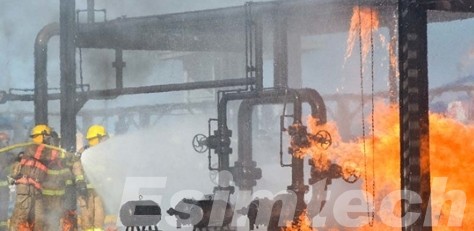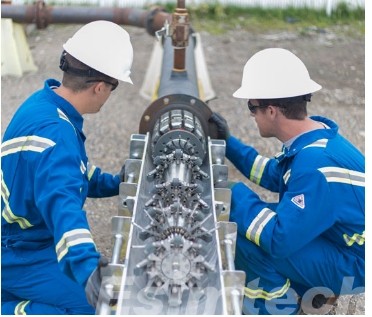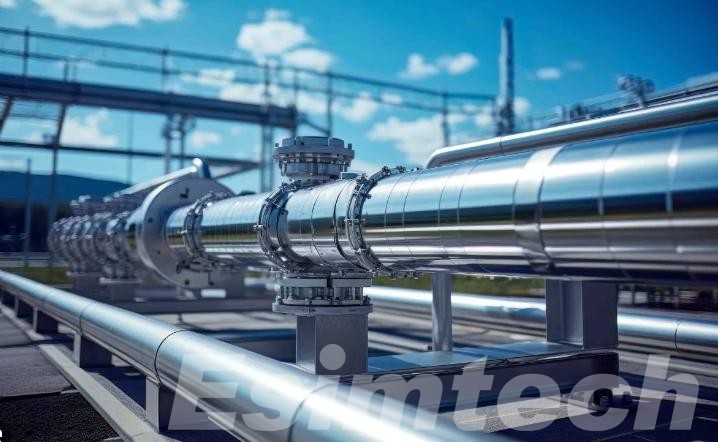What is an Effective Emergency Response Plan for Pipeline Accidents
Pipelines are widely used for transporting oil, gas and other hazardous materials over long distances, making them a vital part of the global energy infrastructure. However, pipeline accidents such as leaks, ruptures, explosions,mechanical failures, etc, pose serious risks to human safety, the environment and economic stability. To mitigate these risks, a well-structured emergency response plan helps protect lives, safeguard the environment, minimize financial loss, and ensure a swift recovery.
Main Categories of Pipeline Accidents
| Category | Description |
| Leaks | Small or slow releases of gas or liquid due to corrosion, cracks, or faulty seals. |
| Ruptures | Sudden and large pipeline breaks resulting in significant fluid or gas release. |
| Explosions & Fires | Ignition of leaked gas or flammable liquids leading to fires or explosions. |
| Mechanical Failures | Structural damage caused by material fatigue, welding defects, or pressure surges. |
| Excavation Damage | Accidental damage from digging, drilling, or construction near the pipeline. |
| Corrosion-Related Failures | Pipeline deterioration due to internal or external corrosion leading to leaks or breaks. |
| Equipment Malfunctions | Failure of valves, pressure regulators, or sensors causing uncontrolled releases. |
| Third-Party Interference | Damage caused by vandalism, sabotage, or unauthorized modifications. |
| Natural Disaster Damage | Earthquakes, landslides, floods, or extreme weather conditions causing physical harm to pipelines. |
| Operational Errors | Mistakes during pipeline operation, such as overpressurization or improper handling. |

Why an Emergency Response Plan is Crucial for Pipeline Accidents
- Protecting Human Lives and Public Safety
One of the most critical reasons for emergency response planning is to protect human lives. Pipeline accidents, particularly gas leaks and explosions, can lead to fires, toxic exposure, and fatalities. A clear evacuation strategy, communication system, and first-response protocols ensure that affected communities and workers can act quickly to avoid harm. Emergency drills and awareness campaigns also help the public understand safety measures in case of an accident.
- Minimizing Environmental Damage
Pipeline spills pose a significant threat to land, water bodies, and ecosystems. Crude oil or hazardous chemical leaks can contaminate soil and drinking water sources, affecting wildlife and agriculture. A rapid containment and cleanup plan, supported by trained response teams and spill recovery equipment, is essential to limit environmental destruction. Coordination with environmental agencies and regulatory bodies further enhances response effectiveness.
- Reducing Financial and Economic Losses
Pipeline failures can result in billions of dollars in damages, including repair costs, legal liabilities, and operational downtime. A well-prepared emergency response plan reduces financial losses by ensuring faster containment, repair, and restoration of pipeline operations. Additionally, avoiding fines, lawsuits, and reputational damage helps companies maintain credibility and business continuity.
- Ensuring Regulatory Compliance
Governments and safety organizations impose strict pipeline safety regulations to prevent and mitigate accidents. Compliance with standards from agencies such as the Pipeline and Hazardous Materials Safety Administration (PHMSA) and the Environmental Protection Agency (EPA) ensures that pipeline operators follow best practices in risk management and emergency response. Failure to meet these requirements can result in heavy penalties and legal consequences.
- Enhancing Coordination and Communication
Effective emergency response planning establishes clear communication channels between pipeline operators, emergency responders, regulatory agencies, and local communities. A structured command system ensures that all stakeholders receive timely information and can work together to contain the situation. Utilizing automated alert systems, emergency hotlines, and digital monitoring tools further enhances response efficiency.
- Strengthening Operational Resilience
A proactive approach to emergency response helps operators improve their overall pipeline safety. By conducting regular risk assessments, training personnel, and implementing advanced leak detection technologies, companies can prevent accidents before they occur. In cases where incidents are unavoidable, preparedness ensures faster recovery, allowing operations to resume with minimal disruption.

Key Elements of an Effective Emergency Response Plan
1. Risk Assessment and Hazard Identification
The first step in creating an effective emergency response plan is identifying potential hazards and assessing the associated risks. This includes evaluating all possible emergencies, ranging from minor accidents to catastrophic failures, that could impact operations, human safety, or the environment. A thorough risk assessment should address various factors, including:
- Physical risks such as equipment failure, explosions, or leaks.
- Environmental risks like hazardous spills, air contamination, and water pollution.
- Human factors including employee errors, human health threats, and security breaches.
Identifying these risks allows organizations to prioritize resources and plan responses accordingly, focusing on the most likely and dangerous scenarios.
2. Clear Communication Protocols
Effective communication is the cornerstone of any emergency response. During a crisis, it’s crucial to ensure that everyone involved knows what to do and how to stay in touch with each other. The communication protocol should include:
- Internal communication: Ensuring that team members, supervisors, and decision-makers are quickly informed of the emergency status.
- External communication: Notifying emergency responders, regulatory bodies, local authorities, and, when necessary, the public. This also includes setting up a communication system that can disseminate emergency alerts quickly, such as mass texting, public address systems, or social media channels.
- Documentation of communication: It’s vital that all communications during an emergency are documented for accountability and post-event evaluation.
3. Roles and Responsibilities
Every emergency response plan must define roles and responsibilities for all individuals involved in managing the crisis. This includes clear designation of:
- Incident commanders: Individuals responsible for overseeing the overall response efforts and making critical decisions.
- Team members: Individuals who will handle specific tasks, such as evacuation, containment, firefighting, medical assistance, or media communication.
- External responders: Local authorities, fire departments, medical teams, and environmental agencies that will provide support.
By establishing these roles in advance, organizations can avoid confusion during a crisis and ensure that all responsibilities are covered.
4. Emergency Response Procedures
The core of any emergency response plan lies in its specific response procedures. These procedures should be clear, concise, and customized to address the risks identified during the risk assessment. They typically include:
- Evacuation plans: Clear instructions on how to evacuate workers and the public from the danger zone.
- Containment and mitigation: Procedures for dealing with hazardous material leaks, fires, explosions, or any other incident to limit the scope of the damage.
- Medical response: Immediate first-aid protocols, medical evacuation procedures, and coordination with local hospitals and health organizations.
- Fire and rescue operations: Specific steps for dealing with fire outbreaks, including fire suppression systems and rescue operations.
- Security measures: Plans for securing the incident area and protecting both the emergency responders and the public from further harm.
Having well-defined emergency response procedures ensures that everyone knows exactly what to do in a crisis, which can significantly reduce response time and minimize the impact of the emergency.

5. Resource Management
An effective emergency response plan requires careful planning for resource allocation. Resources, such as personnel, equipment, and materials, need to be available and easily accessible during an emergency. Key components of resource management include:
Pre-positioning of Resources: Critical equipment like fire extinguishers, medical kits, spill containment materials, and emergency communication tools should be strategically placed to ensure quick access.
Inventory Management: Regularly updating the inventory of emergency supplies ensures that the necessary resources are available when needed.
Logistical Support: Establishing a system to track and deploy resources during an emergency to ensure efficient use and distribution.
Proper resource management minimizes delays in responding to emergencies and ensures that the organization is well-equipped to handle the crisis.
6. Training and Drills
Training is a crucial element of an effective emergency response plan. Even the best-prepared plans will fail if personnel are not properly trained in the response procedures. Key aspects of training include:
- Role-specific training: Ensuring that all employees know their specific roles in the event of an emergency.
- Regular Drills: Conducting emergency exercise simulation systems and tabletop drills to practice emergency response scenarios. These drills help employees practice their roles and identify any weaknesses in the response plan.
- Cross-training: Some employees should be trained in multiple roles to provide flexibility if key personnel are unavailable during a crisis.
Ongoing training and regular drills ensure that all team members are familiar with the procedures and ready to respond effectively when an emergency occurs.

7. Post-Incident Review and Continuous Improvement
After an emergency, it is critical to conduct a post-incident review to evaluate the effectiveness of the response. This includes:
- Assessing Response Times: Analyzing how quickly the organization responded to the emergency and whether it met established timelines.
- Identifying Gaps: Evaluating any weaknesses or challenges encountered during the response and identifying opportunities for improvement.
- Gathering Feedback: Involving employees, emergency responders, and other stakeholders to gain insights into what worked well and what could be improved.
Based on the review, the emergency response plan should be updated and refined to address any deficiencies. Continuous improvement ensures that the organization’s emergency response capabilities evolve to meet new challenges.
8. Regulatory Compliance and Documentation
An effective emergency response plan must also ensure compliance with local, state, and federal regulations. This includes adhering to safety and environmental regulations set by agencies like the Occupational Safety and Health Administration (OSHA), the Environmental Protection Agency (EPA), and other relevant authorities. Key compliance elements include:
- Regulatory Requirements: Ensuring that the plan meets all legal obligations, such as safety standards and environmental protections.
- Documenting Actions: Keeping detailed records of training, drills, and actual emergency responses for accountability and compliance audits.
Having the appropriate documentation in place helps the organization remain compliant with regulatory standards and is crucial in case of legal investigations or audits following an incident.

Summary
Through focusing on risk assessment, early detection, effective communication, containment measures, ongoing training, etc, an effective emergency response plan can enhance emergency preparedness s and minimize the impact of pipeline incidents. The plan not only safeguards human lives and the environment but also ensures operational resilience in the face of potential disasters.

